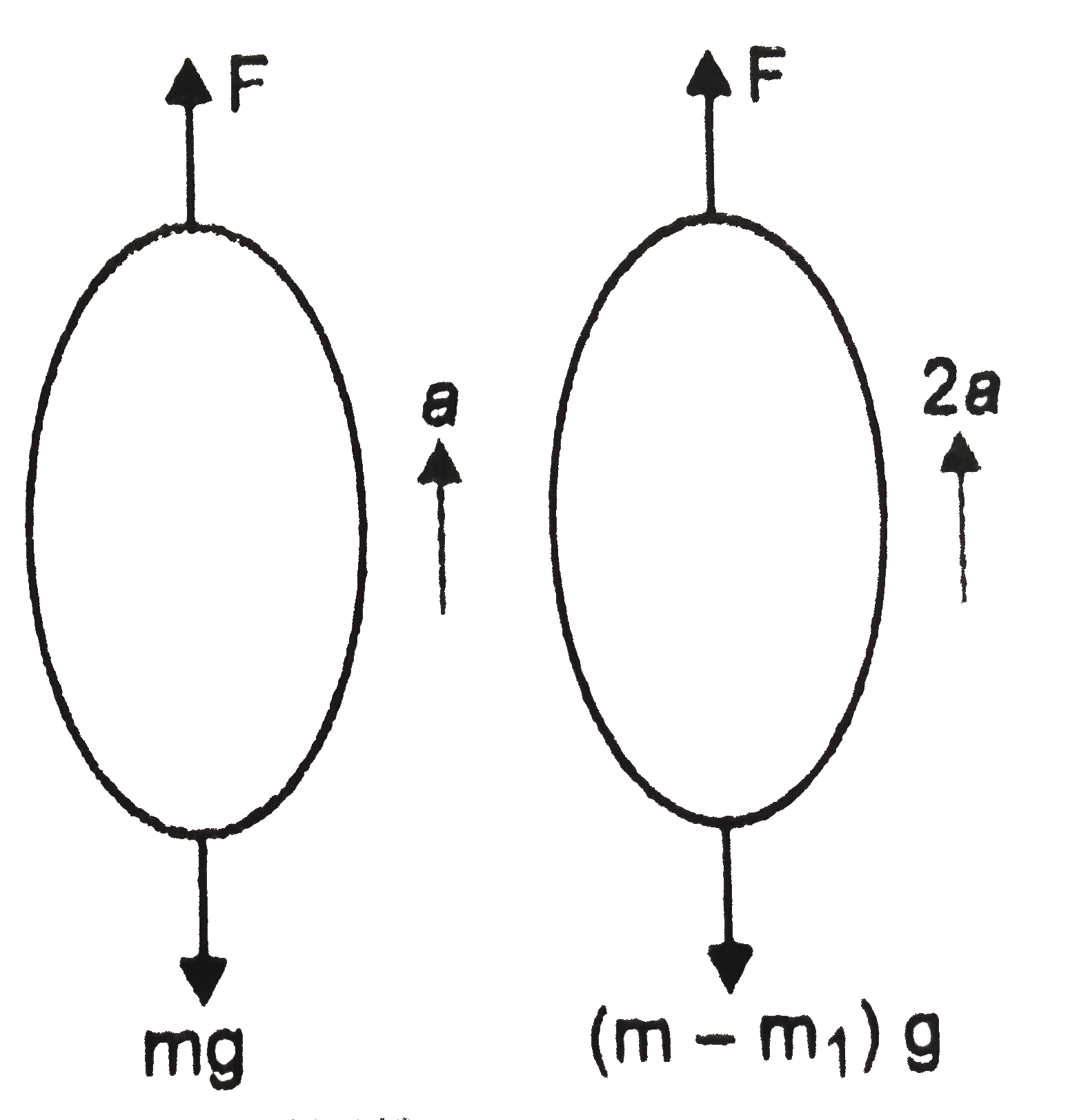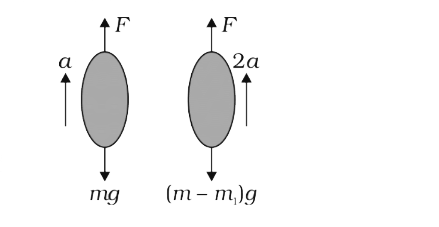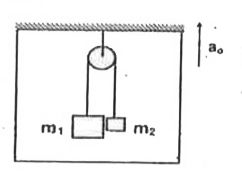A ballon of mass m is rising up with an acceleration a show that the fraction og weight of balloon that must be detached in order to double its acceleration , assuming the upthrust of air to remain the same

Let F be the upthrust of air. As the balloon rises with acceleration a (see figure)
∴F−mg=ma or f = m (g + a) - (i)
When was m1 is removed from the ballon, acceleration becomes (2 a). Therefore
F−(m−m1)g=(m−m1)2a
or F=(m−m1)(g+2a)
From (i) and (ii), (m−m1)(g+2a)=m(g+a)
m=m1=m(g+a)/(g+2a), m1=m−m(g+a)g+2a=mag+2a

Topper's Solved these Questions
- DYNAMICS OF A PARTICLEBook:VMC MODULES ENGLISHChapter:DYNAMICS OF A PARTICLEExercise:LEVEL 0 (LONG ANSWER TYPE)
Explore 4 Videos
- DYNAMICS OF A PARTICLEBook:VMC MODULES ENGLISHChapter:DYNAMICS OF A PARTICLEExercise:LEVEL 1
Explore 75 Videos
- DYNAMICS OF A PARTICLEBook:VMC MODULES ENGLISHChapter:DYNAMICS OF A PARTICLEExercise:LEVEL 0 (SHORT ANSWER TYPE - I)
Explore 7 Videos
- DC CIRCUITBook:VMC MODULES ENGLISHChapter:DC CIRCUITExercise:JEE ADVANCED ARCHIVE
Explore 68 Videos
- ELECTROMAGNETIC INDUCTION & ALTERNATING CURRENTBook:VMC MODULES ENGLISHChapter:ELECTROMAGNETIC INDUCTION & ALTERNATING CURRENTExercise:IN-CHAPTER EXERCISE-G
Explore 10 Videos
Similar Questions
A balloon os mass 2 KG is rising up with an acceleration of 4ms2 . The upward force acting on the balloon is (g = 10 ms^-2)
View SolutionA balloon of mass m is descending down with an acceleration How much mass should be g2 removed from it so that it starts moving up with same acceleration?
View SolutionA balloon of mass M descends with an acceleration a0. The mass that must be thrown out in order to give the balloon an equal upwards acceleration will be
View SolutionA balloons of mass M is descending at a constant acceleration α. When a mass m is released from the balloon, it starts rising. With the same acceleration α. Assuming that its volumes does not change, what is the valule of m?
View SolutionA balloon with mass m is descending down with an acceleration a (wherea<g) . How much mass should be removed from it so that it starts moving up with an acceleration a?
View SolutionA balloon of mass 10 kg is raising up with an acceleration of 20ms−2. If a mass of 4 kg is removed from the balloon its acceleration becomes ( take, g=10ms−2)
View SolutionA balloons of mass M is descending at a constant acceleration α. When a mass m is released from the balloon, it starts rising. With the same acceleration α. Assuming that its volumes does not change, what is the valule of m?
View SolutionA balloon is descending with a constant acceleration a, less than the acceleration due to gravity g. The weight of the balloon, with its basket and contents, is w. What weight w, should be released so that the balloon will begin to accelerate upward with constant acceleration a? Neglect air resistance.
View SolutionA pulley fixed to the ceiling of an elevator car carries a thread whose ends are attached to the masses m1andm2. The car starts going up with an acceleration a0. Assuming the masses of the pulley and the thread as well as the friction to be negligible, find:

(a) the acceleration of the load m1 relative to the elevator shaft and relative to the car
(b) the force exerted by the pulley on the ceiling of the car. Given m1>m2.
View SolutionA person of mass m is on the floor of a lift. The lift is moving down with an acceleration 'a'. Then :
a) the net force is acting in downward direction and is equal to mg
b) the force mg must be greater than reaction force
c) the man appears to be lighter than his true weight by a factor (a/g)
View Solution

